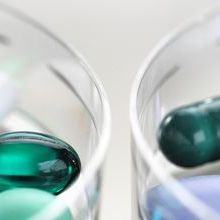Editorial
Issue: Natural Products and Drug Discovery
05 November 2019 article

Welcome to the November edition of Microbiology Today, the last one for 2019! This time we are addressing the wonderful world of drug discovery and natural products. The natural world has provided us with a huge diversity of products, which have been utilised for everything from medicine to pesticides. The sources of the natural products can themselves be from a variety of places and include products produced by micro-organisms, plants and animals.
The discovery of a novel molecule is often the very first step in a long process, leading to a functional product that we then see in wider circulation. Our authors provide an insight into some of the current research that is advancing natural products for microbiology.
First to take us into the world of natural products is Lorena Fernández-Martínez, who brings us the actinomycetes. Highlighting the role these micro-organisms have had over the years, she gives us a real appreciation of the impact these bacteria have had in antimicrobial compound development. Describing the diversity of products that have come from these micro-organisms, Lorena discusses how new culture approaches might lead to the discovery of previously hidden compounds.
It is not just micro-organisms which can produce compounds with antimicrobial activity, and taking us from micro-organisms to plants, Heather Graz gives us some insight into the research and development steps necessary to turn something like the humble bulb of garlic into a registered pharmaceutical product. Addressing both the science and the business involved in natural product design, Heather suggests how research in this field could move forward.
On to a substance that needs input from both plants and animals, Aled Roberts discusses the role for honey in infectious disease control, highlighting how variation between different honeys affects their antimicrobial activity. Drawing on research which elucidates how manuka honey can inhibit bacteria in different ways, Aled addresses how this natural product could be used to help in the fight against antibiotic resistance.
Next, we shift our focus from medical to environmental, with Alex J. Mullins and Eshwar Mahenthiralingam explaining how Burkholderia have shown potential as natural alternatives to synthetic pesticides. With a growing world population that needs feeding, the need for safe and effective pesticides to protect food crops is becoming ever more important. Alex and Eshwar discuss the genomics which have led to the identification of key genes in these bacteria, and also the challenges involved when designing a product that will be released into the environment.
While prospecting around the globe in the hunt for natural products, we sometimes forget to take a closer look at what we already have. Thomas Vorup-Jensen, Stig Hill Christiansen and J. Eskild Petersen look at how drug repurposing can create useful antimicrobial agents. Addressing delivery, toxicity and development costs, they demonstrate how rational experimental design can uncover effective antimicrobial candidates from compounds originally designed to treat non-infectious diseases.
Finally, with the business end of drug discovery in mind, Michael Bagnall gives us the inside track on the various issues which can impact drug discovery and natural product development from a manufacturing point of view. Reminding us that discovering a promising natural product is only the very start of the process, Michael outlines the complex and ever-evolving factors which need to be considered before a product can reach its intended market.

Rowena Jenkins
Editor
Image: Pharmaceutical research, conceptual image. Tek image/Science Photo Library.
